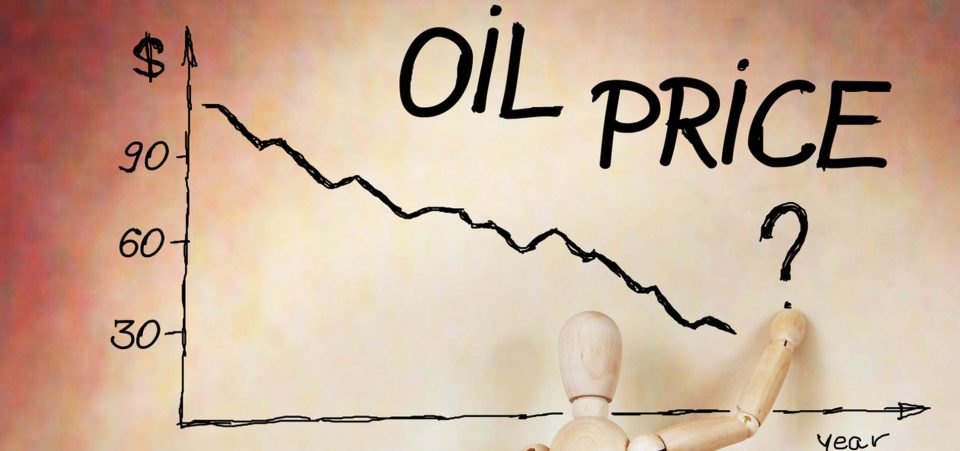Oil Prices in 2017: Prospects Are Not Bullish
After an eventful year, the oil industry appeared to have gotten a break at the end of 2016. The Organization of the Petroleum Exporting Countries (OPEC) agreed to cut production. Crude prices reacted, gaining over eight percent in December alone. But can the bullish course last? In fact, the oil price forecast for 2017 remains bearish.
Almost a year ago to the day, oil prices dropped to levels not seen since 2003. They recovered in December 2016, moving above $52.00 and reaching $54.00 on January 6, 2017. Since then, any bullish oil price predictions ran into the wall of geopolitics. Bipartisan efforts to smear President-elect Donald Trump through Cold-War-style “fake news” and renewed geopolitical uncertainties stalled crude’s ascent. By January 10, 2017, oil prices went back down to $50.82.
Oil Price Outlook: Oil Prices in 2017 Will Drop Again
In the first quarter, there might be a spike in the crude oil price 2017. Oil prices in 2017 could exceed even $60.00 a barrel as OPEC members cut production as promised, but it will be only a temporary boost. These high oil price levels will be challenging to maintain, because the pressure remains considerably bearish. The crude oil price 2017 is a bit like Don Corleone in Godfather III: “Just when I thought I was out, they pull me back in.”
The new year has just started and, already, the price of oil appears to have boarded a roller coaster. The oil price forecast, at best, will include many ups and downs. But the “downs” will have the final word and the oil price forecast looks decidedly bearish. The best that can be expected is for oil to drop to the pre-December 2016 OPEC agreement level: about $40.00-$45.00/bbl.
News of the OPEC agreement immediately caused a sharp rise in energy stocks 2017. But, the oil & gas stocks 2017 scenario is more complicated. Analysts have suggested that the oil price would stabilize around $60.00 per barrel throughout 2017. But, so far, the indications do not support that optimistic target.
In its latest oil and gas industry outlook, the International Energy Agency (IEA) published its oil prices forecast for 2017. The IEA foresees Brent Crude averaging at $50.00 and WTI (West Texas Intermediate) at a price of $51.00 per barrel during 2017. (Source: “PR | GIQ Industry Survey: Oil to Average in the $50s/bl in 2017,” IndraStra Global, January 12, 2017.)
More specifically, the IEA expects that the price of Brent Crude oil and that of WTI are maintained at an average of $50.00 per barrel in the first half of 2017. Any increase—to $55.00, at best—would have to wait until the second half of the year. It would not be wise to be too confident about oil & gas stocks 2017 just yet.
Goldman Sachs Group Inc (NYSE:GS) had a somewhat more optimistic oil price prediction last December. Still, it did not expect oil prices to go above $60.00. Two factors that helped boost oil prices at the end of last year were the rise in militant attacks in Nigeria (not Boko Haram, but separatists in the oil-rich Niger Delta) and continued infighting in Libya.
Sponsored Advertising Content: You’ll Never Guess Which BIG American Bank is Going Bankrupt NEXT
Beware the Bullish Oil and Gas Industry Outlook in 2017
Despite the somewhat bullish start to 2017, risks abound. These could not only limit the extent of the increase; they could push oil back down to below $45.00. In fact, the world risks a major recession in 2017.
Not all OPEC countries are like Saudi Arabia and Kuwait. Thus, not all can afford to cut their production to keep in line with the OPEC agreement. Some countries, like Algeria, need sustained oil production to maintain social cohesion, or risk an “Arab Spring” episode of their own. Here are five reasons why oil prices in 2017 could suffer.
1. Libya and Nigeria
There is Libya, which, in a not-too-distant past was a leading member of OPEC. The Italian government recently reopened its embassy in Tripoli. Italy’s Eni SpA (BIT:ENI) has long been Libya’s leading foreign producer. There’s a chance that Libya has started to find some stability.
I would not move there—I have lived there before—but Libya’s oil production could see a major increase in 2017. Moreover, OPEC has already exempted it—along with Nigeria—from having to cut production.
Libya might be experiencing a political stabilization. It’s still precarious, and the country remains split in three parts, but the key oil-producing region of Cyrenaica is under the control of the secular General Khalifa Haftar. He has recently intensified talks with Russia, which could do for Libya what it did in Syria: crush the Islamists.
As for oil, General Haftar has allowed ENI to resume and intensify oil production. Nigeria, meanwhile, has reclaimed the role of Africa’s top oil producer, beating out Angola. Thus, the two countries, capable between them of producing some three million barrels a day, have been catching up faster than the market has absorbed the OPEC December 2016 agreement.
This puts the other oil producers in a situation of weakness. The risk of a breach, though, comes not necessarily from an OPEC member, but rather from a non-OPEC producer. As Libya and Nigeria have resumed production—Nigeria even overtaking Angola as Africa’s top producer now—why should Russia, Oman, or South Sudan for that matter, cut production?
OPEC produced 33.87 million bbl./day last November. The agreed-upon OPEC production ceiling stands at 32.5 million bbl. The cuts required to reach it exceed the agreed-upon 1.2 million barrels per day. That gap has already risen to 1.37 million bbl per day. It will rise again.
Italy’s diplomatic return to Libya has much to do with ENI. It controls one of the largest oil fields in the North African country, “The Elephant” (“Fil” in Arabic). ENI shut it down in 2015. Sharara, the largest Libyan field, operated by Spain’s Repsol, was shut down in 2014. Together, the two fields have a capacity of 450,000 barrels per day; both have resumed production at the end of 2016.
Meanwhile, the Es Sider oil terminal, the largest in Libya, in Cyrenaica, is ready to resume operations, after being recaptured by General Haftar’s forces. It was closed in 2014 and, by itself, can handle over 600 barrels per day. In fact, Libya has doubled oil production since last September. It now stands at about 600,000 bbl.
All of a sudden, to suggest that Libya could be heading back toward the one million bbl mark is realistic. It could happen in 2017. General Haftar, who has made much of this possible, was speaking to Russian officials aboard the Admiral Kuznetsov aircraft carrier off the Cyrenaican coast.
This has led to speculation that Moscow and Vladimir Putin would be backing Haftar. At present, the security standpoint remains fragile at best. But that’s where a Russian-backed Haftar could find it easier to challenge the remaining militias. The news from Libya and Nigeria have already put pressure against rising oil prices.
As these two countries continue to increase production, that bearish pressure can only increase. The only factor that could stop oil prices from falling is another OPEC agreement, which would necessarily include Nigeria and Libya.
Sponsored Advertising Content: The Great Crash of 2017
2. Higher Price Encourages U.S. Shale Production: OPEC Will Challenge
The higher the oil price, the more it encourages the shale oil industry in the United States. If prices increase to $70.00 or beyond, the risk is that the U.S. would become a de-facto OPEC competitor. At that price, Texas oil producers could become net exporters, threatening to enter markets that were, until now, dominated by the Middle East/North African nations.
This is a real and major threat. With U.S. shale producers waiting to pounce on the slightest hint of a bullish turn, OPEC is on the lookout. They will start pumping eagerly in response, trouncing any agreement. They cannot afford to give up the market share they’ve built since the 1940s.
Technology and practice has made American shale producers more efficient. This has lowered the minimum price floor for competitiveness. For the sake of argument, some oil wells in the Bakken Formation could break even at a WTI price of $30.00/bbl. It all depends on how much it costs to drill and how much oil the completed well can produce. (Source: “The Break Even Cost For Shale Oil,” Forbes, February 29, 2016.)
The shale oil barrier alone suggests that OPEC cannot afford oil prices to reach anywhere close to $60.00. That’s the high end of oil price predictions in 2017, let alone oil at $70.00.
3. Economic Slowdown in China
China recently revised its economic growth target for 2017. The government has such low confidence that it conceded that GDP could fall below 6.5% this year. Capital flight continues, and the Chinese markets risk another summer-2015-style breakdown. That said, China’s reserves are growing.
Having taken advantage of low prices in the past two years, China’s storage facilities have filled up. This cannot but help to reduce the rate of demand in the world’s fastest growing oil consumer.
Then there is the issue of Donald Trump and the strong dollar. “Trumponomics”—Trump’s infrastructure- and domestic-employment-fueled economics—if successful, will trigger a boost in the value of the U.S. dollar.
A stronger dollar could weaken demand and make oil more expensive for China. Trumponomics and its protectionist bent could dampen any budding global recovery. This would clearly lead to a lower oil demand for oil.
In 2016, the annual average was $44.00 per barrel. The agreement whereby OPEC producers would cut production by 1.2 million bbl after the October record (33.7 million barrels per day) also cannot hold because of this Middle East dispute.
4. Iran and Saudi Arabia
While Russia has gotten much of the attention in Syria, the conflict there has highlighted and fueled the rivalry between two major OPEC members: Iran and Saudi Arabia. They have not stopped playing their regional supremacy battle in the Middle East geopolitical chessboard.
The rivalry between Iran and Saudi Arabia has deep historical roots. They are now engaged against each other in at least two military camps. In Yemen, Iran subsidizes Yemeni Houthi rebels while the Saudis have given military support to the regime of Yemeni President Abdrabbuh Mansour Hadi. In Syria, Iran and Russia have backed the Bashar al-Assad regime. Saudi Arabia has unofficially financed many rebel (read: Jihadist) groups. The Syrian president has often accused Saudi Arabia of backing none other than Islamic State (aka ISIS or ISIL). Even Wikileaks has suggested as much.
This has economic repercussions, primarily where oil is concerned. Not only does Saudi Arabia want to put pressure on shale oil producers in Texas to prevent them intercepting their international customers. The Saudis want low oil prices to limit Iran’s oil earnings, just as the international sanctions have been lifted.
Iran, which just came back into the market after the sanctions were lifted, was financing battles against Saudi Arabia.
The rivalry between the two powers has religious roots. Saudi Arabia is the main Sunni Islamic country and Iran is the main Shiite Muslim country. They have extended their rivalry into a competition to become the leading power in the Middle East. This is what makes the current—and any other— OPEC agreement so precarious.
Iran and Saudi Arabia must reach a major political agreement first. This includes one to end the wars in Syria and Yemen. Until that happens, OPEC will be at the mercy of these top members extending their ploys for regional supremacy into the fold of oil prices.
5. Donald Trump
The reason why we have witnessed a rise in the oil price from a low of $27.55 to a maximum of $55.21 was the now-known OPEC agreement. When investors think of oil prices, they think of the relationship between supply and demand in the first place. But the primary driver of oil prices goes beyond simple supply and demand. Geopolitical events have perhaps an even greater weight in determining the value of oil.
Indeed, many of the bearish oil price factors for 2017 have geopolitical dimensions. The biggest geopolitical factor of 2017 is Donald Trump’s election. Some say he won by surprise. Others, who were more diligent in covering the 2017 U.S. presidential election campaigns, were not surprised. Hillary Clinton was the wrong candidate for the Democrats.
Trump’s risk is related to shale oil, coincidentally. His energy policy proposals could lead to the very kind of American oil production increases that OPEC fears. Trump has always declared himself in favor of fracking and fossil fuels rather than renewables.
Meanwhile, fracking, the technique used to boost the United States’ oil-producing capacity is less controversial than it might first appear. Fracking allows U.S. producers to extract oil in rocky areas using high-pressure water to break the rocks. This technique is not new; it was invented in the 1940s.
It was expensive at first, and it spread only when the price of a barrel of oil started to soar. Fracking also saw a revival at the beginning of the 1970s with the first oil shock. But the point for the oil and gas industry outlook is that fracking has allowed the United States to achieve and exceed the capabilities of such crude oil and gas producers as Saudi Arabia and Russia in a few years.
The Saudis decided to fire back in 2014. They exploited their huge deposits and cheap production costs to increase supply. This reduced oil prices and hurt the value of oil & gas stocks. Accordingly, the valuations of major American energy stocks 2017, companies in the industry like Exxon Mobil Corporation (NYSE:XOM), Chevron Corporation (NYSE:CVX), and Halliburton Company (NYSE:HAL) remain at risk.
But Trump has another wild card. Should he, as expected, improve ties between the U.S. and Russia, it would make it easier to encourage Texas shale, benefiting energy stocks. Russia cannot cope with low crude oil prices, but only because it can’t sell. Even high prices would not benefit Moscow.
Putin wants the lifting of sanctions, which would enable Russia to sell worldwide again. Russia would also be able to attract foreign partners in a variety of exploration projects. Trump and Putin could reach a veritable quid pro quo agreement for the ages.
Such an agreement would make it difficult—if not impossible—for OPEC and non-OPEC countries to agree to the production cuts. Oil prices in 2017 could drop back to the 2016 average of $44.00 per barrel. Trump’s election is therefore the major deciding factor; the ultimate game changer for the oil and gas industry outlook.
Hillary Clinton would have perpetuated the current state of affairs, intensifying pressure on Russia to favor Saudi Arabia, which has significant reasons of its own to boost oil prices. Meanwhile, the European Union, facing populist pressure, remains eager to open up to Russia. Slow economic growth there means that low oil prices are preferable.






